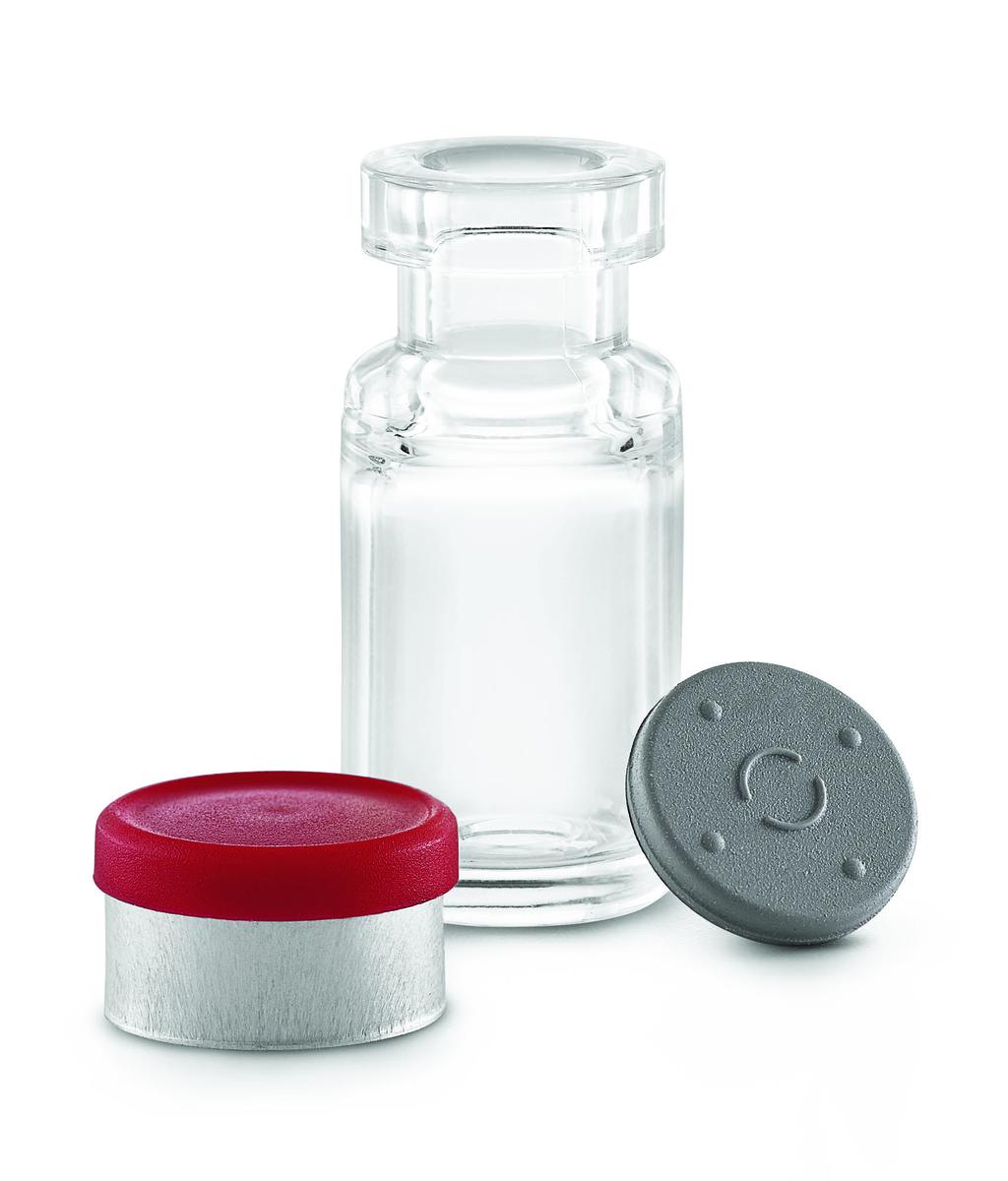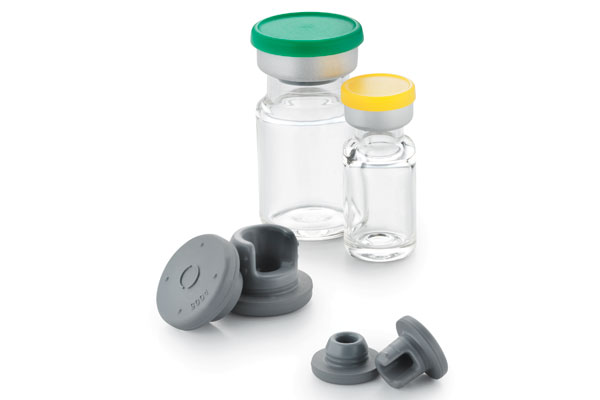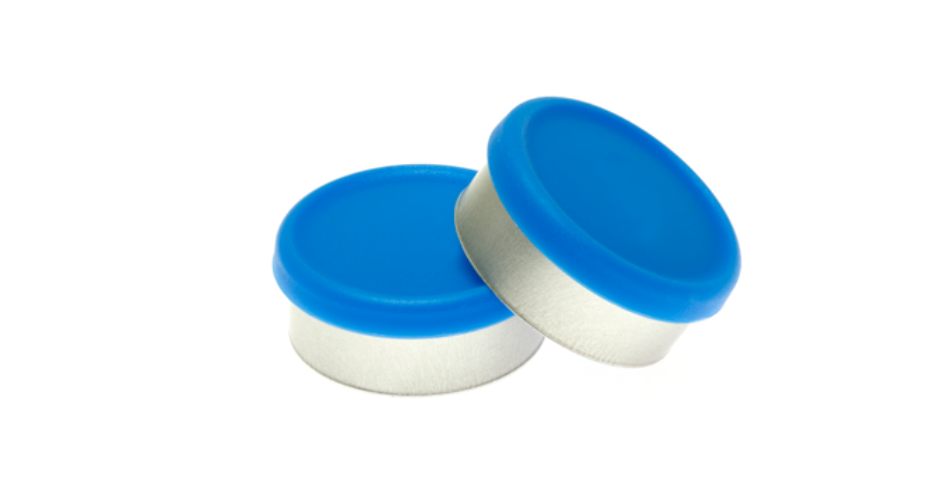Scientific Management of Pharmaceutical Container Closure & Delivery Device Compatibility
INTRODUCTION
Many aspects of drug and biologic container closure and delivery devices (CC/DD) have transformed over the decades and continue to rapidly evolve in tandem with advancements across many therapeutic modalities. Certain applications have even disrupted typical conditions of use. Comparatively, the priority areas for CC/DD assessment have remained consistent – with a main objective of qualifying for intended use.
Varying regulatory requirements and gradations of information for pharmaceutical products, devices, or drug-device combination products must be considered throughout the pharmaceutical product lifecycle. There are many elements that ladder up to protecting drug and biologic quality in order to deliver safe and effective medicines to patients, and sound scientific evidence is necessary to qualify CC/DD. The relationship between pharmaceutical products and CC/DD is best managed through a rich science-based approach that factors in potential risk and is adapted early in the development process.
REGULATIONS IMPACTING PHARMACEUTICAL CONTAINER CLOSURE & DELIVERY DEVICES
Regulatory requirements continue to focus on pharmaceutical quality, safety, and efficacy with a goal of improving access to life-saving medicines. The basic premise for CC/DD for use with drug and biologic products has always existed, but approaches have matured over the years as therapeutic treatments have advanced. Increasingly, regulatory FDA guidance has centered on recommendations for advanced pharmaceutical products and drug-device combination products, which are oriented toward critical thinking and science- and risk-based decision-making.
The FDA basic guidance on Container Closure Systems for Packaging Human Drugs and Biologics dates back to 1999.1 While the fundamental aspects for suitability of the components used in systems remain the same, the complexity of today’s pharmaceutical products and delivery devices surpasses the original intent. Under the 1999 guidance, there are four main pillars to demonstrate container closure systems suitability: protection, safety, compatibility, and performance. These same concepts extend to all dosage forms, including the delivery devices, but expectations today call for science- and risk-based approaches, linking to finished pharmaceutical products with clinical outcomes.
New concepts for pharmaceutical quality were introduced by the FDA in early 2000 to address Good Manufacturing Practices (GMPs) and ensure overall fitness for use.2 The fundamental principle is to transform pharmaceutical development and manufacturing from empirical endpoint testing to one that builds in scientific understanding based on a quality target product profile (QTPP) and critical quality attributes (CQAs). This concept is grounded in Quality-by- Design (QbD) holistic development and is embedded in the International Council on Harmonization (ICH) quality guidelines ICH Q8-10.3
Suitability of CC/DD is critical to pharmaceutical quality and further augmented in the case of drug-device combination products. Risk-based approaches are also captured in the FDA’s 1997 guidance for Device Design Controls for Medical Devices Manufacturers, the premise of which is to employ risk-based assessments to ensure a low probability of manufacturing poor quality pharmaceuticals.4
Different types of pharmaceutical products can present unique regulatory approaches. For instance, therapeutic proteins, cell, and gene therapies have specific guidance documents above and beyond the recommendations in the 1999 guidance – whereas drug-device combination products (eg, prefilled syringes) have different regulatory approaches and GMPs, depending on the drug-device primary mode of action.5-7

West Pre-filled Syringe Components Being Prepped for an Injection
While the approaches to justifying compatibility of CC/DD with different types of pharmaceutical products varies, there are commonalities in terms of data required to demonstrate suitability and compliance.8 Initial baseline compliance data is essential for components used in CC/DD, but not sufficient to verify intended use. The path to qualification of CC/DD always leads from ensuring product quality and safety of patients – it is the process for providing evidence that has changed over the years, as scientific data and knowledge management has become more advanced.
ASSESSING COMPATIBILITY OF CONTAINER CLOSURE SYSTEMS & DELIVERY SYSTEMS
The primary container system will have a major impact on the quality of an injectable pharmaceutical product. The components of these systems have direct product contact throughout the product shelf-life and pose the highest risk for drug or biologic incompatibility. There are various types of primary container systems (eg, vial/stopper, prefilled syringe, or cartridge systems). Delivery devices – such as an autoinjector or on-body injectors – are more complicated with more functional properties and a greater number of components, with some having intermediate product contact as well as body contact.

Daikyo Crystal Zenith Vial with Stopper & Seal

West’s Next-Generation Cartridge Components
Compatibility covers a broad range and varying degrees of potential risks that will depend on many interrelated factors between the pharmaceutical product, primary container system, and delivery device. Components that comprise the final containment and delivery system are considered suitable for use with a given pharmaceutical product, provided that interactions have not occurred and caused unacceptable changes in the quality of either the dosage form or the packaging component.
This can be further broken down into a host of quality risks, which include: loss of product potency due to absorption or adsorption of the active drug substance, or degradation of the active drug substance induced by a chemical entity leached from a packaging component; reduction in the concentration of an excipient due to absorption, adsorption or leachable-induced degradation; precipitation; changes in drug product pH; discoloration of either the dosage form or the packaging component; or increase in brittleness of the packaging component.1
Each pharmaceutical product will have an individual set of risk factors that are linked to container closure and delivery device suitability, and the testing strategy will be guided by type of active pharmaceutical ingredient. The compatibility risks can be viewed in terms of small and large molecules. Small synthetic molecules have well-characterized structures and defined attributes, while large molecules (biological) are dynamic molecules with three-dimensional structures not easily characterized and very sensitive to its environment. As a class, biological products are structurally diverse and complex, possibly having one or more molecular entities, and are very sensitive to product contact surfaces and other effects, such as heat, light, agitation, and surface properties. Biological product quality is based on defined critical attributes and the extent to which they can vary without affecting the patient safety or biologic efficacy; however, biological critical attributes are not readily apparent especially in early development phases.
This is an opportunity, during pre-formulation stages, to identify suitable product contact surfaces based on the intended route of administration. Issues related to components or changes to the biologic product during clinical trials can be mitigated and controlled early while building a deeper product -process knowledge to protect product quality and patient safety.
ANTICIPATING & MITIGATING CHALLENGES WITH CONTAINER CLOSURE & DELIVERY DEVICES
Extractables & Leachables
Patient safety can be impacted by each component of the primary container closure systems, including some secondary components (eg, labels). Although the initial indication of material/component safety is based on biocompatibility data, it is not a substitute for extractable and leachable studies.

Container Systems With Residual Seal Force
The knowledge from extractable studies can be used to ensure the proper chemical profile for component performance as well as other material compatibility issues (eg, propensity to leach or product absorption/adsorption properties). Biological products are particularly susceptible to quality issues due to their hydrophobic and hydrophilic nature and potential for the primary container materials to adsorb or adsorb the biological active or excipients. Biological formulations can also have a greater extraction propensity, which would facilitate leaching and can impact product quality (eg, biological degradation, deamidation, oxidation, or conformational changes) and safety.
Leachables are also an ever-present factor that can pose challenges in all products because they are inherently variable with slow migration kinetics, posing potential issues at the end of shelf-life. Leachables are chemical entities that have directly migrated from CC/DD components into the finished product to be assessed for toxicity based on patient exposure. Leachables can also react to form a new entity affecting the impurity profile or induce other chemical interactions affecting product quality. Potential product quality issues are discerned through comparative analysis in later phases of development once biological attributes critical to quality have been established. The knowledge derived in early phases of development will assist in unraveling the origin and sources of poor quality and enable mitigation strategies. It is too late to initiate compatibility verification based on registration batches.
Quality and compatibility assessments should continue to build as appropriate throughout the development cycle to avoid delays. A comprehensive case-by-case test plan is necessary to demonstrate suitability of the components used to contain, store, distribute, and administer life-saving medicines. Early partnerships and rich knowledge exchange can pave the way for efficient approvals and product lifecycle management.
Risk Management
Current regulatory and scientific best practices have paved the way for connecting pharmaceutical quality attributes with potential risks and challenges associated with CC/DD components. As pharmaceutical products and manufacturing processes have become more scientific and complex, early identification of risks to the intended label claim is essential to avoid poor quality, adverse events, recalls, and drug shortages.
Historic cases of poor pharmaceutical quality – as well as resulting critical learnings – associated with CC/DD include:
-Reformulation of a biologic product caused leaching, leading to several adverse events. Once identified, the issue was mitigated by lamination of the elastomer product contact area with a fluoropolymer barrier film to protect from elastomer leachables.9
-Multiple recalls due to particulates in various drug products led to rejected product and shortages. Ultimately, a greater understanding of primary container materials, use environment, and susceptibility to particulates led to glass container improvements as well as alternative materials that have greatly reduced such occurrences.10
-Microbial contamination in sterile drug products has caused serious adverse events including death. Poor sealing of the primary container closure systems is among the critical risks, especially in outsource facilities. Enforcement of new standards now in place for container closure integrity (CCI) to mitigate the occurrence of contaminated pharmaceutical products.11

West Flip Off Container Closer System Seals
These are among the many reasons to implement a science- and risk-based approach that integrates CC/DD into early drug product development – and continues throughout its lifecycle.
The overall objective for qualifying a CC/DD with a pharmaceutical product is to meet the established QTPP criteria. Clinical dosing and final pharmaceutical formulation are not apparent in early clinical trials, and changes are inevitable, so informed preliminary decisions on CC/DD can be difficult as such changes occur. The end-goal is to be able to design-in proven safety and effectiveness without contamination and with consideration of CC/DD impact on the labeled dose, strength, quality, and purity. Integrating CC/DD and pharmaceutical holistic knowledge from pharmaceutical product development and manufacturing processes will also help enable efficient scale-up and a reliable supply.
Despite thorough testing, challenges can arise in any case when evaluating CC/DD for pharmaceutical quality, efficacy, and patient safety. Challenges may be more prevalent with certain types of drugs that have unique sensitivities – such as monoclonal antibodies (mAbs) as well as cell gene therapies – requiring systems such as deep cold storage. Every potential interaction cannot always be uncovered early on – sometimes it won’t be known until the late-stage clinicals. As such, a risk- and science-based approach must be applied throughout a product’s lifecycle – from early development through clinicals – as it is the best way to understand the full picture of potential risks, the probability that such risks will occur, and how best to mitigate them.
CONSIDERATIONS IN LIGHT OF COVID-19
We have been navigating through unprecedented times, and the spread of novel coronavirus SARS-CoV-2 (COVID-19) has influenced the healthcare industry on many levels to address unmet medical needs. The SARS-CoV-2 preventive measures and diagnostics are highly relevant right now, given the race to discover safe and effective treatments and vaccines. Amidst the nearly 200 vaccines that are in the pipeline, only a few will reach end of Phase 2 or 3 clinicals, the majority being injectable products.12 While development and approval of biological products can take up to 12 to 15 years, accelerated pathways in the US can be granted for serious life-threatening diseases – significantly reducing timelines by using surrogate endpoints with Phase 4 confirmatory trials.13
Each biological product will have specified dosing, formulation ingredients, manufacturing processes, and storage requirements that will have defined attributes to ensure compatibility of the treatment or vaccine with CC/DD. The suitability of a delivery device is influenced by the drug product or vaccine formulation, which can be complex depending on the type of product – such as a mAb, antigen, or adjuvant. Injectable liquid formulations can be aqueous-based or complex in the form of emulsions, liposomes, or nanoparticles – all of which have different requirements for device functionality as well as posing different levels of risk for the device to leach chemicals or absorb product. A sterile injectable must be contained in an integral system that will not leak and will deliver an accurate dose relative to the viscosity of the product and volume administered.
In cases of pandemic, technology transfer and manufacturing scale-up are essential for rapid deployment of life-saving vaccines. Preparedness for manufacturing, containing, and protecting the vaccine (and delivery to patients) is part of an efficient development plan; the compatibility of the vaccine together with the storage delivery device should not be a limiting factor. It can be expected that an inundation of COVID-19-related requirements will continue for the foreseeable future, including a heightened sense of urgency and collaborative partnerships that will be vital for successful distribution of safe and effective vaccines.
KEY TAKEAWAYS
The suitability of drug products with containment and delivery devices is based on the needs of the pharmaceutical QTPP. It is vital to integrate evidence to demonstrate that the components used in storage, delivery, and manufacturing systems are all compatible with the pharmaceutical CQAs. Existing baseline data and prior knowledge for each individual component can be a starting point for assessment when establishing the pharmaceutical QTPP. Linkage of the knowledge from components and systems to product quality, efficacy, and patient safety can guide proper studies to investigate and identify risks.
As the foundational data continues to build in-depth knowledge, the need for mitigation can be anticipated. Focused studies for intended use will provide a basis for comparability to critical attributes as changes occur throughout clinicals.
A science- and risk-based approach should enable all-inclusive verification of components for validation and develop targeted control strategy. Early planning and partnership are necessary to build robust data over the product lifecycle and acquire collaborative evidence to demonstrate product quality, efficacy, and safety with timely approval and accessibility for the benefit of patients.
REFERENCES
- S. Food and Drug Administration (FDA). Container Closure Systems for Packaging Human Drugs and Biologics: Guidance for Industry. U.S. FDA website. July 1999. Accessed July 2020. https://www.fda.gov/regulatory-information/search-fda-guidance-documents/container-closure-systems-packaging-human-drugs-and-biologics.
- S. FDA. Current Good Manufacturing Practice (CGMP) Regulations. U.S. FDA website. Updated March 2018. Accessed July 2020. https://www.fda.gov/drugs/pharmaceutical-quality-resources/current-good-manufacturing-practice-cgmp-regulations.
- International Council for Harmonisation of Technical Requirements for Pharmaceuticals for Human Use (ICH). Quality Guidelines. ICH website. Accessed July 2020. https://www.ich.org/page/quality-guidelines.
- S. FDA Center for Devices and Radiological Health. Design Control Guidance for Medical Device Manufacturers. U.S. FDA website. Published March 1997. Accessed July 2020. https://www.fda.gov/media/116573/download.
- S FDA. Guidance Document: Immunogenicity Assessment for Therapeutic Protein Products. U.S. FDA website. Published August 2014. Updated February 2018. Accessed July 2020. https://www.fda.gov/regulatory-information/search-fda-guidance-documents/immunogenicity-assessment-therapeutic-protein-products.
- S. FDA. Guidance Document: Chemistry, Manufacturing, and Control (CMC) Information for Human Gene Therapy Investigational New Drug Applications (INDs). U.S. FDA website. Published January 2010. Updated January 2020. Accessed July 2020. https://www.fda.gov/regulatory-information/search-fda-guidance-documents/chemistry-manufacturing-and-control-cmc-information-human-gene-therapy-investigational-new-drug.
- S. FDA. Guidance Document: Content and Review of Chemistry, Manufacturing, and Control (CMC) Information for Human Somatic Cell Therapy Investigational New Drug Applications (INDs) – Guidance for FDA Reviewers and Sponsors. Published April 2008. Updated February 2020. Accessed July 2020. https://www.fda.gov/regulatory-information/search-fda-guidance-documents/content-and-review-chemistry-manufacturing-and-control-cmc-information-human-somatic-cell-therapy.
- S. FDA. Guidance Document: Current Good Manufacturing Practice Requirements for Combination Products – Guidance for Industry and FDA Staff. U.S. FDA website. Published January 2017. Updated March 2018. Accessed July 2020. https://www.fda.gov/regulatory-information/search-fda-guidance-documents/current-good-manufacturing-practice-requirements-combination-products.
- Boven K, Stryker S, Knight J, et al. The increased incidence of pure red cell aplasia with an Eprex formulation in uncoated rubber stopper syringes. Kidney Int. 2005;67(6):2346-2353. doi:10.1111/j.1523-1755.2005.00340.x.
- S. FDA. Summary of Recent Findings Related to Glass Delamination. U.S. FDA website. Published 2011. Updated May 2018. Accessed July 2020. https://www.fda.gov/drugs/pharmaceutical-quality-resources/summary-recent-findings-related-glass-delamination.
- S. FDA. Guidance Document: Current Good Manufacturing Practice—Guidance for Human Drug Compounding Outsourcing Facilities Under Section 503B of the FD&C Act Guidance for Industry. U.S. FDA website. Published December 2018. Updated January 2020. Accessed July 2020. https://www.fda.gov/regulatory-information/search-fda-guidance-documents/current-good-manufacturing-practice-guidance-human-drug-compounding-outsourcing-facilities-under.
- COVID-19 Epidemiology Update. PharmaCircle website. Updated July 2020. Accessed July 2020. https://www.pharmacircle.com/info/covid19/.
- S. FDA. Fast Track, Breakthrough Therapy, Accelerated Approval, Priority Review. U.S. FDA website. Updated February 2018. Accessed July 2020. https://www.fda.gov/patients/learn-about-drug-and-device-approvals/fast-track-breakthrough-therapy-accelerated-approval-priority-review.

Diane Paskiet has over 25 years of experience with qualifying packaging and delivery systems for use with pharmaceutical products. She is currently Director of Scientific Affairs at West Pharmaceutical Services, where she is involved in science and regulatory programs associated with safety and compatibility of packaging systems. Previous to this role, she was in charge of site operations for West-Monarch Analytical Laboratories. She is a co-recipient of the United States Pharmacopeia (USP) award for Innovative Response to a Public Health Challenge and was awarded the PDA 2019 Packaging Science Award. She serves on the USP Packaging Storage and Distribution Committee, as Chair of Product Quality Research Institute (PQRI) Development Technical Committee (DTC) and as Chair of Parenteral and Ophthalmic Drug Product Leachables and Extractables Working Group. Ms. Paskiet is also on the faculty of the Parenteral Drug Association Training Institute and author/co-author of papers and book chapters on pharmaceutical packaging and delivery devices.
Total Page Views: 11304









